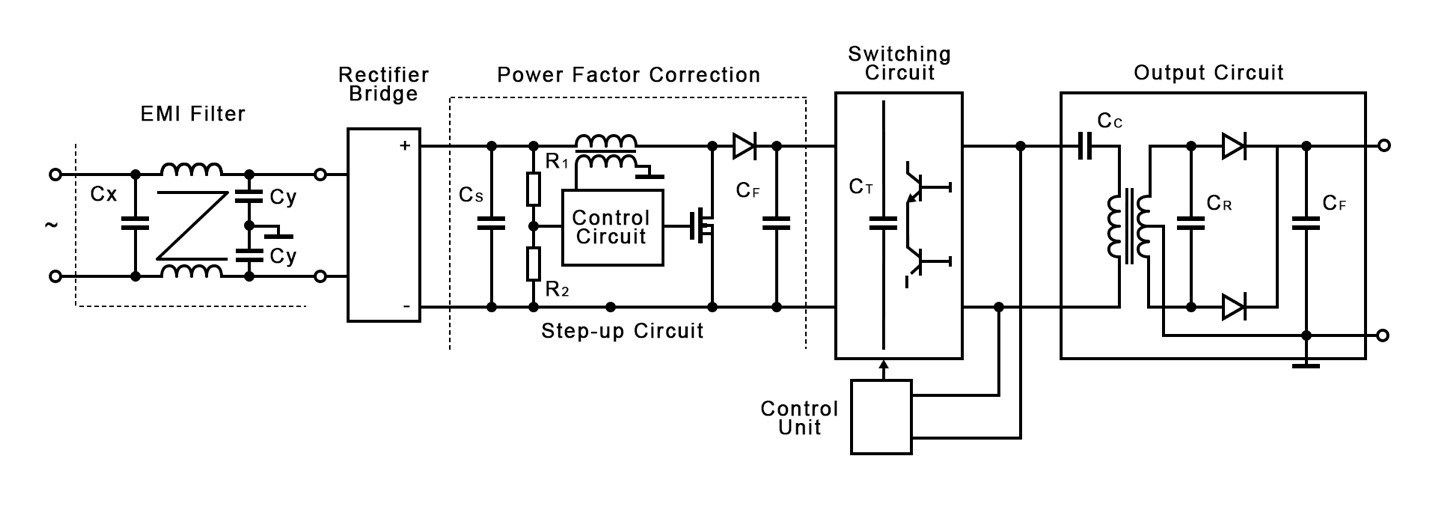首页
torch.cat([DMT_yl,DMT_yh[0]], dim=1)
torch.cat([DMT_yl,DMT_yh[0]], dim=1)
时间: 2024-01-10 12:04:10
浏览: 120
这行代码使用 PyTorch 中的 `torch.cat()` 函数将两个张量在维度 1 上进行拼接。`DMT_yl` 和 `DMT_yh[0]` 是要被拼接的两个张量,它们在维度 1 上的大小必须相等(除了维度 1 以外的其他维度可以不同)。拼接后得到的新张量的维度 1 的大小是两个张量维度 1 大小之和。
阅读全文
相关推荐
深度解读PyTorch中torch.cat函数用法
result_0 = torch.cat((a, c), dim=0) # 沿着第二个维度(dim=1)连接张量a和b result_1 = torch.cat((a, b), dim=1) 在这个例子中,result_0将是一个形状为(6, 3)的张量,因为它将a和c在第一个维度上...
深入解析PyTorch中with torch.no_grad()的用途与优势
资源摘要信息:"在PyTorch深度学习框架中,with torch.no_grad() 是一个重要的上下文管理器,它用于控制计算图的自动求导功能。该上下文管理器适用于不需要计算梯度的场景,比如模型的推理或评估阶段。在使用这个上...
PyTorch中torch.max与F.softmax函数的维度解析
d = torch.max(input, dim=0) # 按列取max 这将返回每一列的最大值和它们对应的位置。同样,dim=1会返回每一行的最大值。 python e = torch.max(input, dim=1) # 按行取max F.softmax函数则是将...
深度学习框架_PyTorch_torch.stack()函数和torch.cat()函数
torch.stcak()函数对多个张量在维度上进行叠加。 其中参数dim代表不同的维度。 具体如下代码所示: >>> a = torch.ones(3,3) >>> a tensor([[1., 1., 1.], [1., 1., 1.], [1., 1., 1.]]) >>> b = torch.ones(3,3) ...
torch.cuda.is_available()返回False解决方案
torch.cuda.is_available() 是一个重要的函数,用于检查当前系统是否能够使用CUDA,即NVIDIA的GPU加速库。当这个函数返回 False 时,意味着你的程序将无法在GPU上运行,而会退化到使用CPU。以下是一些可能导致 ...
torch.cuda.is_available()返回False的问题解决
torch.cuda.is_available()返回False的问题解决
one hot编码:torch.Tensor.scatter_()函数用法详解
torch.Tensor.scatter_()是torch.gather()函数的方向反向操作。两个函数可以看成一对兄弟函数。gather用来解码one hot,scatter_用来编码one hot。 scatter_(dim, index, src) → Tensor dim (python:int) – 用来...
PyTorch的torch.cat用法
torch.cat是将两个张量(tensor)拼接在一起,cat是concatnate的意思,即拼接,联系在一起。 2. 例子理解 >>> import torch >>> A=torch.ones(2,3) #2x3的张量(矩阵) >>> A tensor([[ 1., 1., 1.], [ 1., 1., 1....
0463-极智开发-解读torch.cat的用法
0463_极智开发_解读torch.cat的用法
torch.cat()函数的官方解释,详解以及例子
可以直接看最下面的例子,再回头看前面的解释,就很明白了。 在pytorch中,常见的...—-torch.cat(inputs, dim=0) → Tensor 函数目的: 在给定维度上对输入的张量序列seq 进行连接操作。 outputs = torch.cat(input
torch-1.6.0-cp39-cp39-win_amd64.whl__numpy-1.19.2+mkl-cp39-cp39-win_amd64.whl
标题中的“torch-1.6.0-cp39-cp39-win_amd64.whl”和“numpy-1.19.2+mkl-cp39-cp39-win_amd64.whl”是两个重要的Python库的 wheel 文件,用于在Windows 64位环境下安装PyTorch和NumPy。让我们详细了解一下这两个库...
torch-1.6.0-cp38-cp38-win_amd64.whl__numpy-1.19.2+mkl-cp38-cp38-win_amd64.whl
标题中的"torch-1.6.0-cp38-cp38-win_amd64.whl"和"numpy-1.19.2+mkl-cp38-cp38-win_amd64.whl"是两个重要的Python库的 wheel 文件,它们是专门为Python 3.8版本和Windows AMD64架构编译的。让我们逐一深入探讨这两...
torch_nn_functional_conv2d_problem:torch.nn.functional.conv2d在ARM和x86_64体系结构上的不同输出
应用相同的输入和参数时,torch.nn.functional.conv2d在ARM和x86_64体系结构上的输出不同。 运行脚本:python3functional_conv2d_example.py已经在results /文件夹中提供了已计算的结果。 在output_tensor_arm.txt...
DataLoader.py_torch数据_.DataLoader数据加载器_
torch.utils.data.DataLoader 数据加载器,结合了数据集和取样器,并且可以提供多个线程处理数据集在训练模型时使用到此函数,用来把训练数据分成多个小组,此函数每次抛出一组数据,直到把所有的数据都抛出。...
Visual Assist X_10.9.2324.0_Cracked.PiaoYun_P.Y.G
[PYG成员作品] [2019-03-20更新]Visual Assist X10.9.2324.0-Cracked.By.PiaoYun/P.Y.G
pytorch torch.expand和torch.repeat的区别详解
1.torch.expand 函数返回张量在某一个维度扩展之后的张量,就是将张量广播到新形状。函数对返回的张量不会分配新内存,即在原始张量上返回只读视图,返回的张量内存是不连续的。类似于numpy中的broadcast_to函数的...
PyTorch中torch.tensor与torch.Tensor的区别详解
除此之外,torch.tensor 还提供了一种简洁的语法糖,可以快速创建单元素张量,比如 torch.tensor(1) 直接返回一个值为 1 的张量,而 torch.Tensor(1) 则创建一个大小为 1 的随机张量。这是因为 torch.Tensor...
pytorch:torch.mm()和torch.matmul()的使用
在PyTorch中,torch.mm() 和 torch.matmul() 都是用来执行矩阵乘法操作的函数,但它们之间存在一些微妙的区别。本文将深入探讨这两个函数的使用、功能以及它们在不同情况下的适用性。 首先,让我们了解矩阵乘法...
algorithm_torch.py
algorithm_torch.py
cuda_torch.zip
print(torch.cuda.get_device_properties(0)) else: print("CUDA not available.") 若输出显示CUDA版本信息且表明CUDA可用,那么恭喜你,CUDA Torch已成功安装。 总结一下,安装CUDA Torch需要完成以下步骤...
CSDN会员
开通CSDN年卡参与万元壕礼抽奖
海量
VIP免费资源
千本
正版电子书
商城
会员专享价
千门
课程&专栏
全年可省5,000元
立即开通
全年可省5,000元
立即开通
大家在看
GL3231S USB4.0读卡器Layout和原理图及相关的FW
GL3231S USB4.0读卡器Layout和原理图及相关的FW
keb变频器 f5中文说明书-维修安装调试
本说明书详细介绍了keb变频器 f5 相关参数,使用方法和异常调试,如果想要更多变频器技术说明书、请访问CSDN下载频道
IPC-7351 使用说明
IPC-7351 软件,零件封装库制作标准软件的中文使用说明。
实验二DML语言一(数据插入、修改和删除.doc
大学在校生以及从事互联网开发学习人员
ZYNQ_7020核心板原理图.pdf
XC7Z020处理器,外扩DDR3 SDRAM,Winbond flash,eMMC,PHY等设计资源
最新推荐
Simulink仿真:基于扰动观察法的光伏MPPT改进算法 参考文献:基于扰动观察法的光伏MPPT改进算法+录制视频讲解 仿真平台:MATLAB Simulink 关键词:光伏;MPPT;扰动观察法
Simulink仿真:基于扰动观察法的光伏MPPT改进算法 参考文献:基于扰动观察法的光伏MPPT改进算法+录制视频讲解 仿真平台:MATLAB Simulink 关键词:光伏;MPPT;扰动观察法;模糊控制 主要内容:针对 MPPT 算法中扰动观察法在稳态时容易在 MPP 点处震荡,以及步长固定后无法调整等缺点,提出一种算法的优化改进,将模糊控制器引入算法中,通过将计算得到的偏差电压作为第一个输入量,同时考虑到扰动观察法抗干扰能力弱,再增加一个反馈变量做为第二输入量来提高其稳定性.仿真分析表明,相比较传统的扰动观察法,在外部温度和光照强度发生变化时,改进的扰动观察法稳定性较好,追踪速率有所提高,同时需要的参数计算量少,能较好的追踪光伏最大功率。
免安装JDK 1.8.0_241:即刻配置环境运行
资源摘要信息:"JDK 1.8.0_241 是Java开发工具包(Java Development Kit)的版本号,代表了Java软件开发环境的一个特定发布。它由甲骨文公司(Oracle Corporation)维护,是Java SE(Java Platform, Standard Edition)的一部分,主要用于开发和部署桌面、服务器以及嵌入式环境中的Java应用程序。本版本是JDK 1.8的更新版本,其中的241代表在该版本系列中的具体更新编号。此版本附带了Java源码,方便开发者查看和学习Java内部实现机制。由于是免安装版本,因此不需要复杂的安装过程,解压缩即可使用。用户配置好环境变量之后,即可以开始运行和开发Java程序。" 知识点详细说明: 1. JDK(Java Development Kit):JDK是进行Java编程和开发时所必需的一组工具集合。它包含了Java运行时环境(JRE)、编译器(javac)、调试器以及其他工具,如Java文档生成器(javadoc)和打包工具(jar)。JDK允许开发者创建Java应用程序、小程序以及可以部署在任何平台上的Java组件。 2. Java SE(Java Platform, Standard Edition):Java SE是Java平台的标准版本,它定义了Java编程语言的核心功能和库。Java SE是构建Java EE(企业版)和Java ME(微型版)的基础。Java SE提供了多种Java类库和API,包括集合框架、Java虚拟机(JVM)、网络编程、多线程、IO、数据库连接(JDBC)等。 3. 免安装版:通常情况下,JDK需要进行安装才能使用。但免安装版JDK仅需要解压缩到磁盘上的某个目录,不需要进行安装程序中的任何步骤。用户只需要配置好环境变量(主要是PATH、JAVA_HOME等),就可以直接使用命令行工具来运行Java程序或编译代码。 4. 源码:在软件开发领域,源码指的是程序的原始代码,它是由程序员编写的可读文本,通常是高级编程语言如Java、C++等的代码。本压缩包附带的源码允许开发者阅读和研究Java类库是如何实现的,有助于深入理解Java语言的内部工作原理。源码对于学习、调试和扩展Java平台是非常有价值的资源。 5. 环境变量配置:环境变量是操作系统中用于控制程序执行环境的参数。在JDK中,常见的环境变量包括JAVA_HOME和PATH。JAVA_HOME是JDK安装目录的路径,配置此变量可以让操作系统识别到JDK的位置。PATH变量则用于指定系统命令查找的路径,将JDK的bin目录添加到PATH后,就可以在命令行中的任何目录下执行JDK中的命令,如javac和java。 在实际开发中,了解并正确配置JDK对于Java开发者来说是一个基础且重要的环节。掌握如何安装和配置JDK,以及如何理解JDK中的源码和各种工具,对于进行Java编程和解决问题至关重要。
管理建模和仿真的文件
管理Boualem Benatallah引用此版本:布阿利姆·贝纳塔拉。管理建模和仿真。约瑟夫-傅立叶大学-格勒诺布尔第一大学,1996年。法语。NNT:电话:00345357HAL ID:电话:00345357https://theses.hal.science/tel-003453572008年12月9日提交HAL是一个多学科的开放存取档案馆,用于存放和传播科学研究论文,无论它们是否被公开。论文可以来自法国或国外的教学和研究机构,也可以来自公共或私人研究中心。L’archive ouverte pluridisciplinaire
【提升效率与稳定性】:深入掌握单相整流器的控制策略
# 摘要 单相整流器作为电力电子技术的基础设备,广泛应用于电力系统和工业自动化领域。本文首先概述了单相整流器的基本概念,详细分析了其工作原理,包括电力电子器件的角色、数学模型以及控制策略。随后,针对控制技术进行了深入探讨,包括传统控制技术如PID控制和高级控制策略如模糊逻辑控制及自适应控制的应用。进一步地,本文提出了一系列提升单相整流器性能的方法,如效率提升策略、系统稳定性措施,以及性能评估与优化方案。最后,文章探讨了单相整流器在不同领域的应用案例,并对新兴技术与市场趋势进行了展望。 # 关键字 单相整流器;电力电子器件;数学模型;控制策略;性能提升;应用案例 参考资源链接:[单相PWM整
你看这是ashx映射的cs文件初始代码,你看这里边根本就没有写对action参数进行任何操作但你.ashx?action=submit这样去做他就能返回出数据这是为什么
在ASP.NET中,.ashx文件(也称为HTTP处理程序)用于处理HTTP请求并返回响应。即使在初始代码中没有对action参数进行任何操作,系统仍然可以通过默认的ProcessRequest方法处理请求并返回数据。 当你在URL中传递参数(如?action=submit)时,这些参数会被包含在请求的查询字符串中。虽然你的代码没有显式地处理这些参数,但默认的ProcessRequest方法会接收这些参数并执行一些默认操作。 以下是一个简单的.ashx文件示例: ```csharp <%@ WebHandler Language="C#" Class="MyHandler" %> us
机器学习预测葡萄酒评分:二值化品尝笔记的应用
资源摘要信息:"wine_reviewer:使用机器学习基于二值化的品尝笔记来预测葡萄酒评论分数" 在当今这个信息爆炸的时代,机器学习技术已经被广泛地应用于各个领域,其中包括食品和饮料行业的质量评估。在本案例中,将探讨一个名为wine_reviewer的项目,该项目的目标是利用机器学习模型,基于二值化的品尝笔记数据来预测葡萄酒评论的分数。这个项目不仅对于葡萄酒爱好者具有极大的吸引力,同时也为数据分析和机器学习的研究人员提供了实践案例。 首先,要理解的关键词是“机器学习”。机器学习是人工智能的一个分支,它让计算机系统能够通过经验自动地改进性能,而无需人类进行明确的编程。在葡萄酒评分预测的场景中,机器学习算法将从大量的葡萄酒品尝笔记数据中学习,发现笔记与葡萄酒最终评分之间的相关性,并利用这种相关性对新的品尝笔记进行评分预测。 接下来是“二值化”处理。在机器学习中,数据预处理是一个重要的步骤,它直接影响模型的性能。二值化是指将数值型数据转换为二进制形式(0和1)的过程,这通常用于简化模型的计算复杂度,或者是数据分类问题中的一种技术。在葡萄酒品尝笔记的上下文中,二值化可能涉及将每种口感、香气和外观等属性的存在与否标记为1(存在)或0(不存在)。这种方法有利于将文本数据转换为机器学习模型可以处理的格式。 葡萄酒评论分数是葡萄酒评估的量化指标,通常由品酒师根据酒的品质、口感、香气、外观等进行评分。在这个项目中,葡萄酒的品尝笔记将被用作特征,而品酒师给出的分数则是目标变量,模型的任务是找出两者之间的关系,并对新的品尝笔记进行分数预测。 在机器学习中,通常会使用多种算法来构建预测模型,如线性回归、决策树、随机森林、梯度提升机等。在wine_reviewer项目中,可能会尝试多种算法,并通过交叉验证等技术来评估模型的性能,最终选择最适合这个任务的模型。 对于这个项目来说,数据集的质量和特征工程将直接影响模型的准确性和可靠性。在准备数据时,可能需要进行数据清洗、缺失值处理、文本规范化、特征选择等步骤。数据集中的标签(目标变量)即为葡萄酒的评分,而特征则来自于品酒师的品尝笔记。 项目还提到了“kaggle”和“R”,这两个都是数据分析和机器学习领域中常见的元素。Kaggle是一个全球性的数据科学竞赛平台,提供各种机器学习挑战和数据集,吸引了来自全球的数据科学家和机器学习专家。通过参与Kaggle竞赛,可以提升个人技能,并有机会接触到最新的机器学习技术和数据处理方法。R是一种用于统计计算和图形的编程语言和软件环境,它在统计分析、数据挖掘、机器学习等领域有广泛的应用。使用R语言可以帮助研究人员进行数据处理、统计分析和模型建立。 至于“压缩包子文件的文件名称列表”,这里可能存在误解或打字错误。通常,这类名称应该表示存储项目相关文件的压缩包,例如“wine_reviewer-master.zip”。这个压缩包可能包含了项目的源代码、数据集、文档和其它相关资源。在开始项目前,研究人员需要解压这个文件包,并且仔细阅读项目文档,以便了解项目的具体要求和数据格式。 总之,wine_reviewer项目是一个结合了机器学习、数据处理和葡萄酒品鉴的有趣尝试,它不仅展示了机器学习在实际生活中的应用潜力,也为研究者提供了丰富的学习资源和实践机会。通过这种跨领域的合作,可以为葡萄酒行业带来更客观、一致的评价标准,并帮助消费者做出更加明智的选择。
"互动学习:行动中的多样性与论文攻读经历"
多样性她- 事实上SCI NCES你的时间表ECOLEDO C Tora SC和NCESPOUR l’Ingén学习互动,互动学习以行动为中心的强化学习学会互动,互动学习,以行动为中心的强化学习计算机科学博士论文于2021年9月28日在Villeneuve d'Asq公开支持马修·瑟林评审团主席法布里斯·勒菲弗尔阿维尼翁大学教授论文指导奥利维尔·皮耶昆谷歌研究教授:智囊团论文联合主任菲利普·普雷教授,大学。里尔/CRISTAL/因里亚报告员奥利维耶·西格德索邦大学报告员卢多维奇·德诺耶教授,Facebook /索邦大学审查员越南圣迈IMT Atlantic高级讲师邀请弗洛里安·斯特鲁布博士,Deepmind对于那些及时看到自己错误的人...3谢谢你首先,我要感谢我的两位博士生导师Olivier和Philippe。奥利维尔,"站在巨人的肩膀上"这句话对你来说完全有意义了。从科学上讲,你知道在这篇论文的(许多)错误中,你是我可以依
【单相整流器终极指南】:电气工程师的20年实用技巧大揭秘
 # 摘要 单相整流器是电力电子技术中应用广泛的设备,用于将交流电转换为直流电。本文首先介绍了单相整流器的基础知识和工作原理,分析了其设计要点,性能评估方法以及在电力系统和电子设备中的应用。接着,探讨了单相整流器的进阶应用和优化策略,包括提高效率和数字化改造。文章还通过具体案例分析,展示了单
OxyPlot CategoryAxis
在OxyPlot中,CategoryAxis用于创建一个基于类别标签的轴,通常用于折线图或柱状图,其中每个轴的值代表不同的类别。以下是如何在XAML中设置和使用CategoryAxis的一个简单示例: ```xml <!-- 在你的XAML文件中 --> <oxy:CartesianChart x:Name="chart"> <oxy:CartesianChart.Axes> <oxy:CategoryAxis Title="Category" Position="Bottom"> <!-- 可以在这里添加类别标签 -->
STM32-F0/F1/F2电子库函数UCOS开发指南
资源摘要信息:"本资源专注于提供STM32单片机系列F0、F1、F2等型号的电子库函数信息。STM32系列微控制器是由STMicroelectronics(意法半导体)公司生产,广泛应用于嵌入式系统中,其F0、F1、F2系列主要面向不同的性能和成本需求。本资源中提供的库函数UCOS是一个用于STM32单片机的软件开发包,支持操作系统编程,可以用于创建多任务应用程序,提高软件的模块化和效率。UCOS代表了μC/OS,即微控制器上的操作系统,是一个实时操作系统(RTOS)内核,常用于教学和工业应用中。" 1. STM32单片机概述 STM32是STMicroelectronics公司生产的一系列基于ARM Cortex-M微控制器的32位处理器。这些微控制器具有高性能、低功耗的特点,适用于各种嵌入式应用,如工业控制、医疗设备、消费电子等。STM32系列的产品线非常广泛,包括从低功耗的STM32L系列到高性能的STM32F系列,满足不同场合的需求。 2. STM32F0、F1、F2系列特点 STM32F0系列是入门级产品,具有成本效益和低功耗的特点,适合需要简单功能和对成本敏感的应用。 STM32F1系列提供中等性能,具有更多的外设和接口,适用于更复杂的应用需求。 STM32F2系列则定位于高性能市场,具备丰富的高级特性,如图形显示支持、高级加密等。 3. 电子库函数UCOS介绍 UCOS(μC/OS)是一个实时操作系统内核,它支持多任务管理、任务调度、时间管理等实时操作系统的常见功能。开发者可以利用UCOS库函数来简化多任务程序的开发。μC/OS是为嵌入式系统设计的操作系统,因其源代码开放、可裁剪性好、可靠性高等特点,被广泛应用于教学和商业产品中。 4. STM32与UCOS结合的优势 将UCOS与STM32单片机结合使用,可以充分利用STM32的处理能力和资源,同时通过UCOS的多任务管理能力,开发人员可以更加高效地组织程序,实现复杂的功能。它有助于提高系统的稳定性和可靠性,同时通过任务调度,可以优化资源的使用,提高系统的响应速度和处理能力。 5. 开发环境与工具 开发STM32单片机和UCOS应用程序通常需要一套合适的开发环境,如Keil uVision、IAR Embedded Workbench等集成开发环境(IDE),以及相应的编译器和调试工具。此外,开发人员还需要具备对STM32硬件和UCOS内核的理解,以正确地配置和优化程序。 6. 文件名称列表分析 根据给出的文件名称列表“库函数 UCOS”,我们可以推断该资源可能包括了实现UCOS功能的源代码文件、头文件、编译脚本、示例程序、API文档等。这些文件是开发人员在实际编程过程中直接使用的材料,帮助他们理解如何调用UCOS提供的接口函数,如何在STM32单片机上实现具体的功能。 7. 开发资源和社区支持 由于STM32和UCOS都是非常流行和成熟的技术,因此围绕它们的开发资源和社区支持非常丰富。开发者可以找到大量的在线教程、论坛讨论、官方文档和第三方教程,这些资源可以大大降低学习难度,提高开发效率。对于使用STM32单片机和UCOS的开发者来说,加入这些社区,与其他开发者交流经验,是一个非常有价值的步骤。 综上所述,资源“电子-库函数UCOS.rar”提供了STM32单片机特别是F0、F1、F2系列的UCOS实时操作系统库函数,这些资源对于嵌入式系统开发人员来说,是提高开发效率和实现复杂功能的重要工具。通过理解和运用这些库函数,开发者能够更有效地开发出稳定、高效的嵌入式应用。